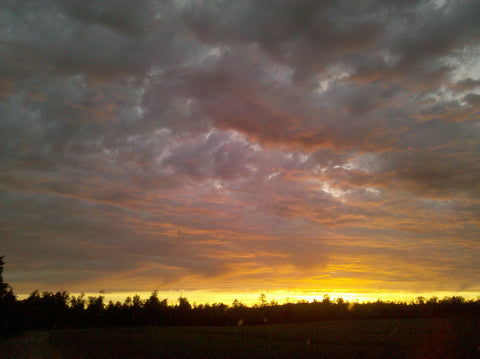5 Questions To Think Like A Photographer

This photo is my film crew as we were taping a segment for my video series, painting watercolor at Monterey, CA. (Watch for free on our YouTube channel). Not everyone can have a degree in photography or filmmaking or years of experience and tens of thousands of dollars in gear, right?
Every photo snapped from your phone isn’t a great photo. Even with an expensive camera your photos can still be average or mundane.. As an art teacher and former professional photographer, I gathered these questions to ask yourself before heading out on your next shoot for great landscape shots:
1) What are you trying to communicate?
Where do you want the viewer to focus? What’s the main point? That main point in your photograph is your FOCAL POINT. Sometimes it is a small specific area in a photo; sometimes it is the whole scene—such as a sunset. In the sunset photo, we all understand what the point is: awesome sky. In the bird picking up the fish on the beach, you can center the focal point, but generally it’s more appealing to scoot it a bit to one side or the other. In art, our sense of composition typically prefers an arrangement that is not “perfectly balanced.” Just as no human face is exactly the same on each side, we are comfortable with variations in symmetry and balance.

Timing and patience is essential to capturing scenes such as this.

A pelican grabbing a fish on a beach in Florida. You want your viewer to be thinking about what the bird is grabbing.

The focal point is the fountain at the Holden Arboretum, Fall 2014. The randomness of the background allows the fountain to be centered in the image. Note the circle of foliage creates almost a frame around the fountain, directing the viewer’s eye where you want it to be.

Dogs playing on a beach bring joy to any dog lover. Note these dogs also help suggest scale to the enormous gray vista near Gloucester, MA. An original painting of this scene is available, as is a greeting card version.
2) How do you want to say it?
This is your POINT OF VIEW. People tend to shoot photos straight on at their own eye level. New technologies such as “Gopro” cameras on dogs, drones, skateboarders, etc., have helped the world see that an unusual point of view can be especially engaging. Don’t be afraid to tilt the camera. Lift above your head and shoot down. Lie on the floor and shoot toward the heavens.

Looking up Into the tree canopy at Cleveland Metroparks. October 2014.

Feels warm and sunny just looking up into the palms.
3) How will you help the viewer enter the scene?
Two good techniques are SCALE and a PATHWAY. Scale can be indicated by including something human-made, such as a fence, or the drinking glasses in Siena, Italy. Or, an actual path into the photo allows the viewer to mentally step into the photo and walk the path. Your landscape reached out and grabs a viewer if he feels he can walk right into the scene.

The wooden bench tucked at the bottom of the tree in this summer scene at a Cleveland Metropark invites a visitor to pause and absorb the serenity.

A bistro table in Siena, Italy, in view of the vineyards and olive orchards. The solitude and casualness of the scene is tempting for the viewer to jump in and sit at the table enjoying an espresso with some biscotti.

The boardwalk on the Wahkeena Nature Preserve, Fairfield County, OH. The boardwalk beckons the viewer to enter the scene.
4) What will make the image pop?
A POP OF COLOR will catch the eye, and generally as the viewer continues to examine the photo, the pop of color pulls her eye back to the intense splash of color. It generates eye flow which tends to force the viewer to linger on the image. This is human nature. Our brain is trained to identify things which stand out against their backgrounds. A red male cardinal rustling in a tree. The movement of a deer in front of forest shrubbery.

The beautiful teal color of the fence is an appealing counterpoint to the natural bright greens, whites, and dark shades of the vistas beyond. The colors are so striking in their juxtapositioning that it is difficult to pull ones eyes away. Plus the partial opening of the gate is an inviting pull to enter the forest outside the gate.

A vase of a few brightly colored poppies create a striking pop of color against the dark Cypress trees. The drinking glasses and copper vessel give a sense of scale and a touch of impromptu casualness.

The unexpected silver-green color of the grasses on this bank at the Holden Arboretum, Cleveland, OH not only create a visual interest, but the “weeping” effect of the foliage creates eye movement that flows diagonally through the image. The tree trunk crossing to the left creates a “cross current” to allow the eye to flow to the left and start entering the photo again. Even the scattering of the fall leaves across the bottom of the image presents a musicality to the image that continues to delight a viewer.
5) When should you use special FXs?
I tend to prefer more natural images although many times for fun, to create or amplify an emotion, or simply to experiment, you may elect to add an effect. In the photo with the yellow finch, the bird had flown across my yard and landed on the external side of my window screen. I had time to grab my phone before it zipped away. But the screen was distracting. Using a standard filter on my Android, I created a vignette with a theme, and it minimized the distraction caused by the screen. On the winter landscape photo, the image was primarily two colors (blue and black) and seemed a bit flat. By using another standard filter on an Android, I created an emotional context for the image that seems to emphasize the stark, solitary frigidness of the scene.

The generic filter on the Android created a post card or “air mail” effect on the little finch that landed on my window screen. the effect minimized the distraction of the screen between the viewer and the bird.

The filter from the Android created an emotional tone to the winter photo.
Some of the images in this post, such as the one with the glasses on the ledge in Siena, have incorporated the answers to several of the questions. This strengthens them.
All these photos (except for the two included under “FXs”) are straight from a camera. None of the scenes was composed. Each one was shot exactly as it appeared. This isn’t required when you shoot your photographs. You are the artist and you can compose scenes and you can manipulate photos. But if you start with a strong image, life is easier.
And, your photos will look like you know how to think like a photographer.
I teach online classes in watercolor painting. See all the options on my Learn page.
Did you like this information? All of my blog posts start as an e-letter and my next e-letter is due out soon. Don't miss out!








Send a message or leave a comment